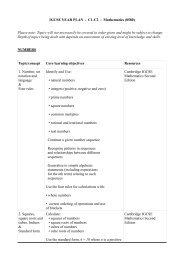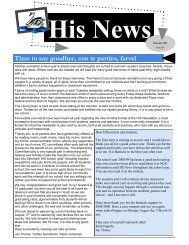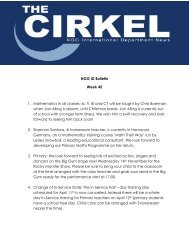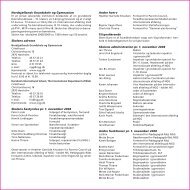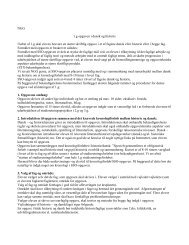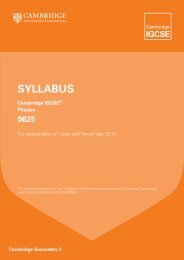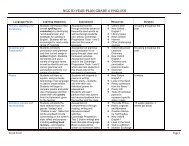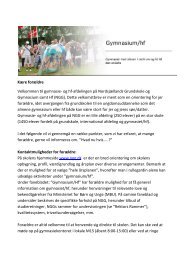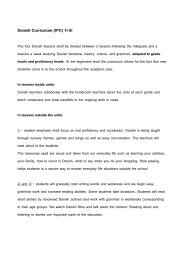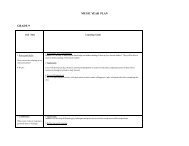Chemistry
Chemistry
Chemistry
Create successful ePaper yourself
Turn your PDF publications into a flip-book with our unique Google optimized e-Paper software.
Curriculum content<br />
14.5 Alkenes<br />
Core<br />
• Describe the manufacture of alkenes and of<br />
hydrogen by cracking<br />
• Distinguish between saturated and unsaturated<br />
hydrocarbons<br />
– from molecular structures<br />
– by reaction with aqueous bromine<br />
• Describe the formation of poly(ethene) as an<br />
example of addition polymerisation of monomer<br />
units<br />
14.6 Alcohols<br />
Core<br />
• Describe the formation of ethanol by fermentation<br />
and by the catalytic addition of steam to ethene<br />
• Describe the properties of ethanol in terms of<br />
burning<br />
• Name the uses of ethanol as a solvent and as a fuel<br />
14.7 Acids<br />
Core<br />
• Describe the physical properties of aqueous<br />
ethanoic acid<br />
Supplement<br />
• Describe the properties of alkenes in<br />
terms of addition reactions with bromine,<br />
hydrogen and steam<br />
Supplement<br />
• Describe the formation of ethanoic<br />
acid by the oxidation of ethanol by<br />
fermentation and with acidified potassium<br />
manganate(VII)<br />
• Describe ethanoic acid as a typical weak<br />
acid<br />
• Describe the reaction of ethanoic acid<br />
with ethanol to give an ester (ethyl<br />
ethanoate)<br />
14.8 Macromolecules Supplement<br />
• Describe macromolecules in terms of<br />
large molecules built up from small units<br />
(monomers), different macromolecules<br />
having different units and/or different<br />
linkages<br />
Cambridge IGCSE <strong>Chemistry</strong> 0620. Syllabus for examination in 2015.<br />
25



